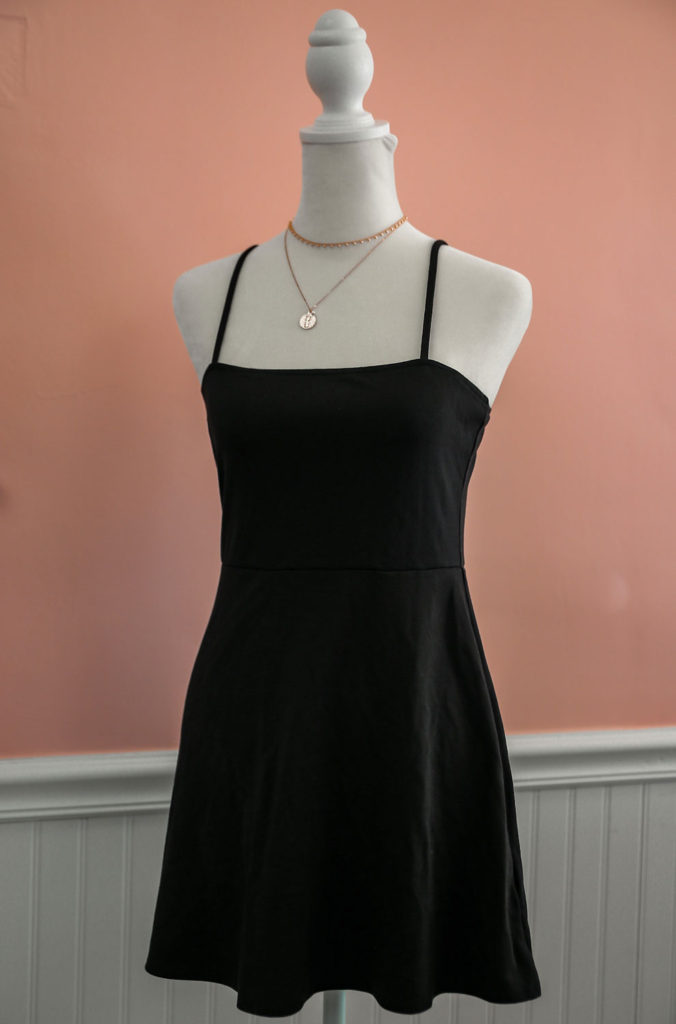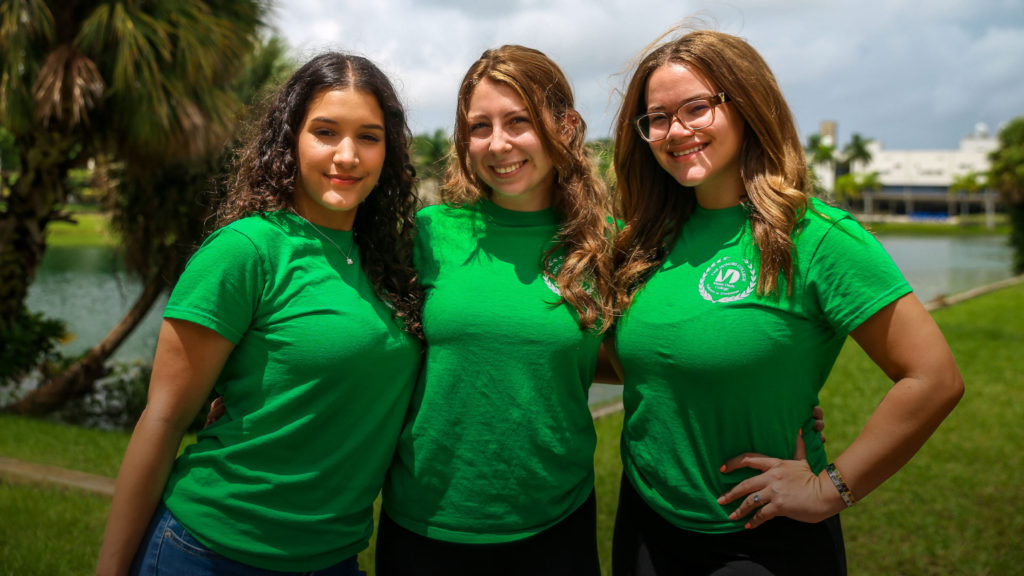Project Swap Aims To Reduce Textile Waste And Build Your Wardrobe
When Victoria Genendlis saw a book swapping box on Curtiss Parkway in Miami Springs, it sparked an idea: she could replicate the concept using clothes.
Genendlis, an Honors College student at Miami Dade College did just that. She recruited two classmates—Ana Delgado and Gabriela Sordo—in February and they launched Project Swap, a nonprofit organization that encourages people to reduce fabric waste by swapping clothes with others.
“[My friends and I] swap clothes with each other so we can always have something new to wear, so why not facilitate a project related to that?” said Genendlis, who is using the venture as her Impact Project for her leadership seminar course at North Campus. “[We figured] it’ll reduce fabric waste and the contribution of fast fashion.”
The trio showcases their clothing and shoe inventory—it consists of donations and items that were swapped—on their Instagram page. A description, the size, condition and brand of each item is specified on each post of the social media site.

People who are interested in an item send a direct message to the page with a picture of the piece they’d like to use in the swap. The transaction is approved if the item is in the same condition and is the same style as the one they hope to acquire.
Acceptable clothing items include tops, dresses, bottoms, two-piece sets and bikinis. Shoes and men’s clothing are also accepted.
“It’s fun, easy and free,” said Daniela Gomez, who has swapped several shirts through Project Swap. “I hope people see that something worn or swapped can give them the same confidence as a brand new piece.”
Exchanges are done at Laced With Charms, a boutique, beauty salon and spa owned by Genendlis’ mother. It’s located at 143 Westward Drive in Miami Springs. Since the project’s inception six months ago, the group has conducted 28 swaps.
The founders say the project is a labor of love. Each student has a specific responsibility in the process.
Genendlis takes photos of the garments and does the exchange. Sordo keeps track of what is being swapped, coordinates the exchange schedule, and keeps statistics for the Instagram posts. Delgado leads the page’s marketing efforts, posting regularly and editing photos.
“When we first started, we didn’t really know each other,” Delgado said. “We sometimes disagree [and] we all have different schedules, so communication sometimes isn’t there. But we try to fix that by meeting frequently or FaceTiming.”
They are proud of the dent they are making in the fight to reduce textile waste. Fast fashion accounts for 10 percent of humanity’s carbon emissions with annual greenhouse gas emissions equivalent to that of seven million cars.
It’s also the second-largest consumer of the world’s water supply. On average, it takes 400 gallons of water to grow the cotton used to make a T-shirt and 1,800 liters to produce the cotton that is used to make a pair of blue jeans.
“We are guests here on Earth. Nature has provided us with a plentiful amount of hospitality,” Genendlis. “It’s only fair that we care for it mindfully.”
The group is not sure if they will continue Project Swap after graduating from North Campus in May, but for now they want to keep swapping—one garment at a time.
“Although we’re small, we’re mighty,” Genendlis said. “People need to stop making excuses for themselves. If they don’t want to swap with us, swap with your friends. If you want to get rid of some clothes, [ask] if anyone is willing to take [them]. The small things are what make a difference.”


